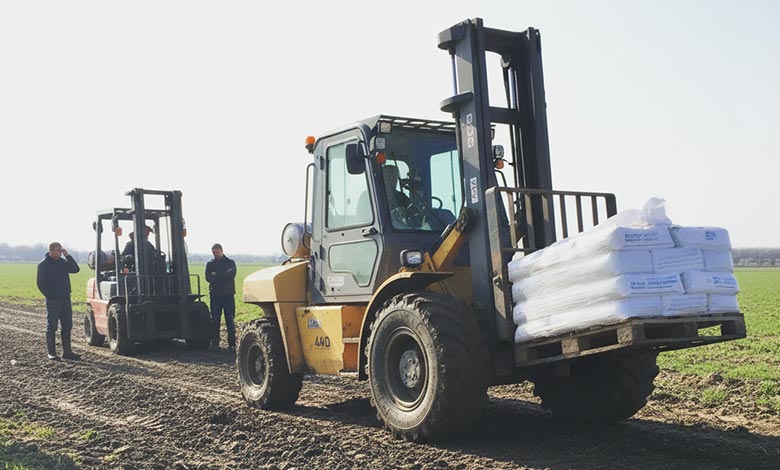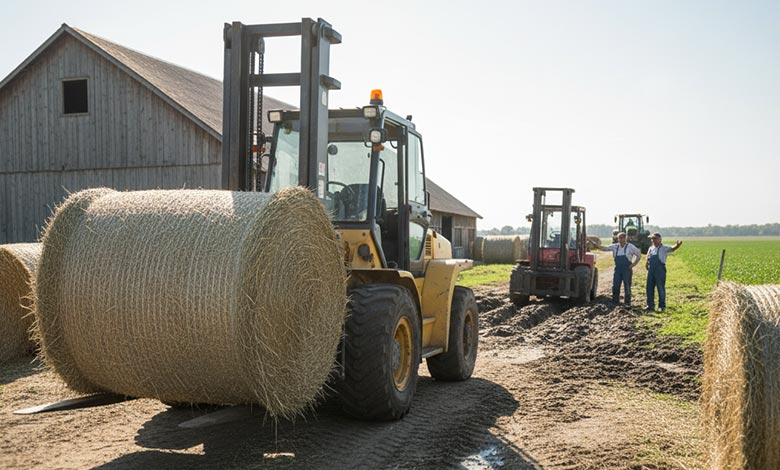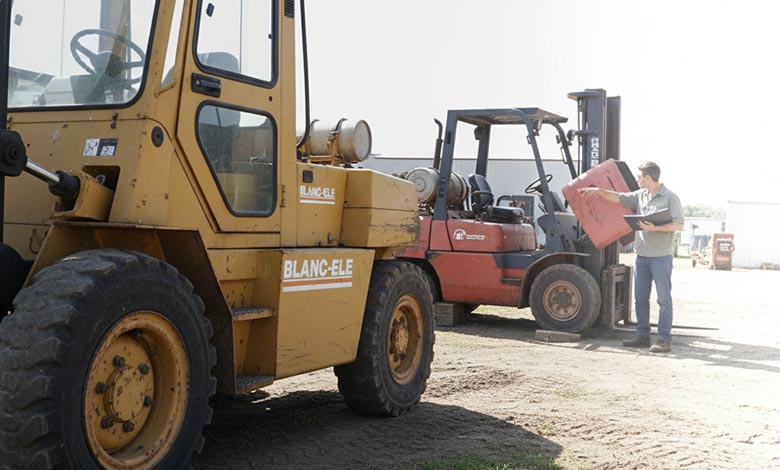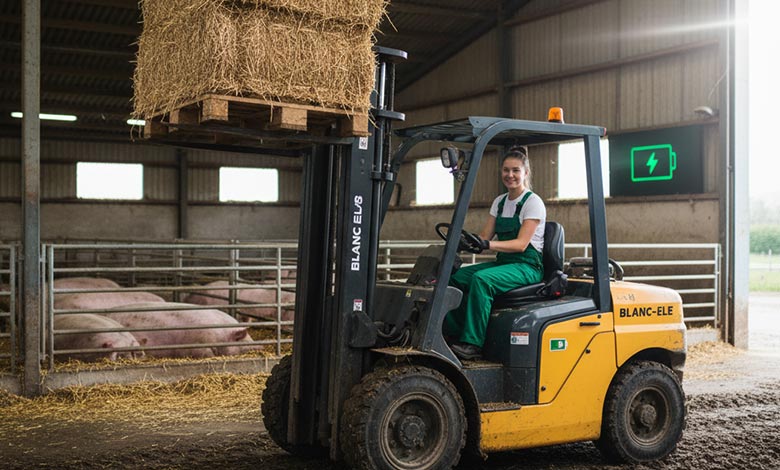I’ve seen it countless times — a regular forklift stuck in wet soil, wheels spinning helplessly while the crew grabs a tractor for rescue. Farms look peaceful from the outside, but the ground, weather, and workload are tougher than most people think.
Farmers choose rough terrain forklifts1 because they can handle mud, grass, soft soil, and uneven ground without losing traction or time. They lift heavier, travel faster, and need far less maintenance2 than standard forklifts.

Let me show you what I’ve learned from real farms — and why these forklifts quietly became the most reliable workmates in agriculture.
What’s the real challenge of working on a farm?
People often think the hardest part of farm work is lifting weight — but the real battle is against nature: uneven ground and unpredictable weather.
Rough terrain forklifts use 4WD systems3, deep-tread tires4, and higher ground clearance5 to maintain steady performance on soft or muddy terrain.

Unlike warehouses, farms have constantly changing surfaces — mud in spring, grass in summer, and dry dust in autumn. A regular forklift can’t move when the ground turns soft. A rough terrain forklift, however, keeps going. It’s the difference between losing a workday to rain and getting the job done on time.
| Challenge | Standard Forklift | Rough Terrain Forklift |
|---|---|---|
| Ground Load Capacity | Low | High |
| Traction | Slips easily | Strong and stable |
| Ground Clearance | 100–150 mm | 250–300 mm |
| Work Continuity | Affected by weather | All-weather performance |
How does it solve daily farm problems?
Most farmers don’t buy rough terrain forklifts1 to show off — they buy them because they’re tired of losing time to bad weather and stuck machines.
On farms, rough terrain forklifts1 handle feed, hay bales, fertilizer, crates, and even equipment — often replacing small loaders or tractors.

In livestock farms, they move feed and straw right into the barns. In orchards, they carry crates and baskets over grassy or muddy paths. In crop fields, they deliver fertilizer, seeds, and tools. And for farm maintenance6, they lift and position building materials for sheds or fences. With one machine doing all that, most farmers realize they don’t need two others.
| Application | Task | Equipment Replaced |
|---|---|---|
| Livestock | Feed & straw handling | Tractor + carts |
| Orchards | Fruit crate transport | Manual labor |
| Crop zones | Fertilizer, tools, irrigation | Small loader |
| Farm maintenance | Shed building, material lifting | Crane / hoist |
Why do farmers call it their “invisible investment”?
Many farmers told me the same thing after a year: “It looked expensive at first — now I can’t imagine working without it.”
Rough terrain forklifts last 30% longer than standard forklifts, with fewer breakdowns, less maintenance2, and higher overall efficiency.

Standard forklifts often break down after just three years of outdoor farm use — dust, moisture, and rough terrain wear them out fast. Rough terrain forklifts, built with sealed frames, corrosion-resistant chassis, and heavy-duty tires, can easily last over five years. The payoff is clear: 30% higher uptime, fewer repairs, and faster return on investment.
| Cost Factor | Standard Forklift | Rough Terrain Forklift |
|---|---|---|
| Average Lifespan | 3 years | 5+ years |
| Annual Maintenance | High | Moderate |
| Downtime | Frequent | Minimal |
| ROI Cycle | 3–4 years | ~2 years |
Is electric the next step for modern farms?
More and more farms are realizing that “quiet, clean, and efficient” isn’t just for warehouses anymore.
Electric rough terrain forklifts1 are becoming popular for farms because they run quietly, cut fuel costs, and reduce emissions in livestock and greenhouse environments.

Traditional diesel engines create noise and exhaust — not ideal around animals or in enclosed barns. Electric 4WD forklifts, however, deliver smooth torque, no fumes, and low noise, making them perfect for modern farms. At BLANC-ELE, our electric RT Series models are equipped with fast-charging systems and high-torque motors that still perform on muddy or uneven ground.
| Comparison | Diesel Forklift | Electric Rough Terrain Forklift |
|---|---|---|
| Noise | High | Very low |
| Emissions | CO₂ + fumes | Zero |
| Maintenance | Frequent oil changes | Minimal |
| Cost Recovery | Slow | Fast (within 2 years) |
Conclusion
For farmers, a rough terrain forklift isn’t just a piece of equipment — it’s the machine that keeps the farm running, no matter the weather. You don’t buy it for luxury — you buy it for reliability.
Explore how rough terrain forklifts enhance farm efficiency and reliability, making them essential for agricultural operations. ↩
Find out why rough terrain forklifts require less maintenance and how this impacts farm operations. ↩
Learn about the advantages of 4WD systems in forklifts and how they tackle challenging farm terrains. ↩
Discover the significance of deep-tread tires in providing traction and stability on uneven surfaces. ↩
Understand how higher ground clearance helps forklifts navigate muddy and uneven ground effectively. ↩
Discover the versatility of rough terrain forklifts in handling various farm maintenance tasks efficiently. ↩
